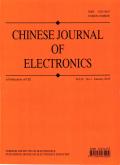基于电磁环境感知的无人机群路径规划
IF 3
4区 计算机科学
Q3 ENGINEERING, ELECTRICAL & ELECTRONIC
引用次数: 0
摘要
无人机群在灾后救援、战场监控等任务中有着广泛的应用。这些任务通常在未知或复杂的环境中执行,需要为无人机群规划安全有效的路径以确保任务的完成。针对未知电磁环境下无人机群的路径规划问题,提出了一种基于环境感知的多智能体深度确定性策略梯度算法,该算法利用控制屏障函数设计了安全学习机制。此外,采用基于弱监督学习的生成式对抗网络算法构建电磁环境传感模块。利用该算法,无人机群可以避开电磁干扰较强的区域,保证在执行任务过程中避免无人机间的碰撞。与没有环境感知模块和安全学习机制的强化学习算法相比,我们提出的算法将收敛时间缩短了约2.5倍。同时,防止个体试错学习过程违反安全约束,保证了未知环境下无人机群的安全。最后,在利用通用软件无线电外设和四轴无人机搭建的实验平台上验证了算法的有效性。本文章由计算机程序翻译,如有差异,请以英文原文为准。
Path Planning for Unmanned Aerial Vehicle Swarm Based on Electromagnetic Environment Sensing
Unmanned aerial vehicle (UAV) swarm is widely used in tasks such as post-disaster rescue and battle-field monitoring. These tasks are often executed in unknown or complex environments, necessitating the programming of safe and efficient paths for UAV swarm to ensure the completion of missions. To address the path planning problem for UAV swarm in unknown electromagnetic environment, we propose a multi-agent deep deterministic policy gradient algorithm based on environment sensing where a safe learning mechanism is designed by using control barrier function. Additionally, a weakly supervised learning-based generative adversarial network algorithm is employed to construct an electromagnetic environment sensing module. By using the algrothim we propose, UAV swarm can avoid zones with strong electromagnetic interference and guarantee inter-UAV collisions avoidance during task execution. Compared to reinforcement learning algorithm without environment sensing module and safe learning mechanism, the algorithm we propose reduces convergence time by approximately 2.5 times. Simultaneously, it prevents individual trial-and-error learning process from violating safety constraints, ensuring the safety of UAV swarm in unknown environment. Finally, we verified the effectiveness of our algorithm on the experimental platform which is constructed by using universal software radio peripherals and quadcopter UAVs.
求助全文
通过发布文献求助,成功后即可免费获取论文全文。
去求助
来源期刊

Chinese Journal of Electronics
工程技术-工程:电子与电气
CiteScore
3.70
自引率
16.70%
发文量
342
审稿时长
12.0 months
期刊介绍:
CJE focuses on the emerging fields of electronics, publishing innovative and transformative research papers. Most of the papers published in CJE are from universities and research institutes, presenting their innovative research results. Both theoretical and practical contributions are encouraged, and original research papers reporting novel solutions to the hot topics in electronics are strongly recommended.
 求助内容:
求助内容: 应助结果提醒方式:
应助结果提醒方式:


